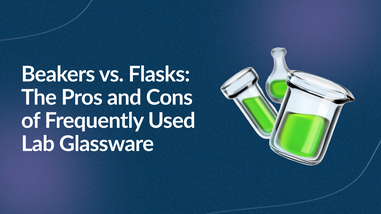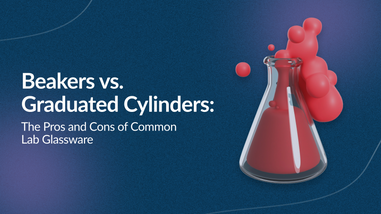- No products in the cart.
Scientists use pipettes to accurately measure and dispense liquid samples. These instruments safeguard the integrity of the sample by providing a clean and safe environment to aspirate, transport, and dispense liquid samples.
Pipettes come in a wide variety of sizes, shapes, and designs to cater to the needs of the different industries. The type of pipette you will need will depend on the application.
What is a transfer pipette?
A transfer pipette is a small lab instrument that is used to move small volumes of liquid from one container to another. Transfer pipettes are disposable, made out of polyethylene plastic and are designed with a long slender tube and a molded bulb.
The barrel is either graduated or smooth and is used for rough measurements. Therefore, if you want an accurate measurement, you’re better off using a measuring pipette.

Since transfer pipettes are disposable, you don’t have to worry about cross-contamination between samples. Transfer pipettes are ideal for urinalysis, blood banking, microbiology, hematology, and chemistry.
How is a transfer pipette used?
Transfer pipettes transfer liquid by aspirating and dispensing the liquid. To aspirate the liquid, the pipette should be in a vertical position. You want to aspirate the liquid at a 90° angle. Press the bulb, lower the tip into the liquid and release the bulb. The liquid will be suctioned up into the tube until it reaches the desired volume.
To dispense the liquid, place the tip of the pipette into the container the liquid is being moved to at a 45° angle and press the bulb to dispense the liquid into the container.
What are the different types of pipettes?
Pipettes are either made of plastic, glass, or are electronic. There are five different types of pipettes. These include the transfer pipette which is disposable, the serological pipette which is graduated, the single-channel pipette, the multichannel pipette, and the repeat dispensing pipette. The most basic pipette is the transfer pipette and the most advanced is the repeat dispensing pipette.
The different types of pipettes use different processes and methods for measuring volume. With serological pipettes, the volume is determined by calculating the difference of the level of the liquid before and after the liquid is dispensed. Single-channel pipettes are designed with an air displacement system and a disposable tip that uses a forward and reverse technique to produce accurate measurements. Multichannel pipettes use more than one tip at a time to aspirate the liquid at the same time from the one well into the various channels. The repeat dispensing pipette allows for a certain volume to be dispensed into various receptacles without the need to aspirate in between which means that the multi dispensing saves a lot of time. The repeat dispensing pipette also has a lever for filling and dispensing instead of a plunger.
Lab Pro offers a large variety of transfer pipettes. For over 40 years, Lab Pro Inc. has been committed to delivering the highest quality transfer pipettes, hand tools, chemicals, lab equipment, distance learning kits, lab supplies, and cleanroom PPE apparel to medical device companies and laboratories worldwide. To learn more, visit the biggest Lab Supply showroom in California, or contact us online or at 888-452-2776.











































